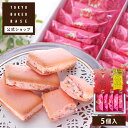Shibari: Aesthetic and artistic rope art

Shibari (or Kinbaku) is an aesthetic and artistic art form based on traditional Japanese rope tying. This unique art, combined with ingenious rope techniques, has captivated many people with its aesthetics. In this article, we explore Shibari's history, purpose, technology, and recommended resources.
1. Origin of Shibari
Shibari is rooted in Japanese history and culture, with its origins dating back to the Edo period. Initially, Shibari was used in traditional theater such as plays and kabuki, and later developed as an erotic art. Its beauty and complexity are highly prized among artists and enthusiasts.
2. Purpose of Shibari
Shibari is performed for various purposes. For some people it is an artistic expression and they are fascinated by the beauty of the body and the pattern of the rope. Others practice Shibari as a means of increasing partnership and intimacy, building trust and connection. Others enjoy it as part of their sexual fetish.
3. Shibari's basic technology
Shibari's basic techniques include rope knots and patterns. Safety and electrical outlets are very important, and accurate knowledge and techniques are required. If you are a beginner, we recommend that you seek guidance from an expert.
4. Resources and community
People interested in Shibari can leverage our community and resources to learn and grow. Online forums, workshops, books, and instruction from Shibari masters are available.
5. Cultural sensitivity
Shibari can have different meanings depending on cultural background and values. It is important to respect and understand people from different cultural backgrounds. Learning about different cultures through Shibari is also an opportunity to deepen your understanding of different cultures.
Shibari is an aesthetic and artistic art form whose practice requires passion, expertise, and safety.
-------------------
Injavi.com - Visit Japan | Visit in Japan
Guide to living, studying and working in Japan
Related Products







































































































